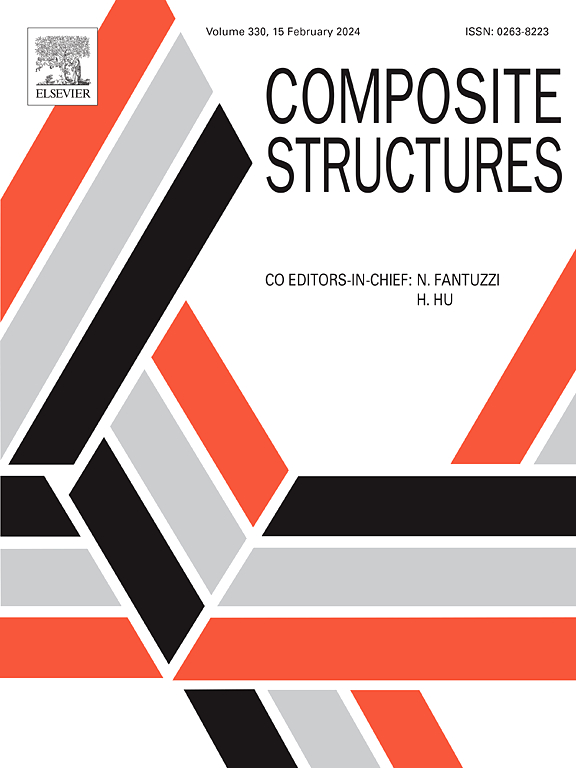Topology optimization method for light-weight design of three-dimensional continuous fiber-reinforced polymers (CFRPs) structures
IF 6.3
2区 材料科学
Q1 MATERIALS SCIENCE, COMPOSITES
引用次数: 0
Abstract
Continuous fiber-reinforced polymers (CFRPs) exhibit excellent mechanical properties and designability, offering more opportunities for achieving better structural performance through optimization. However, the high non-convexity of the concurrent optimization model may result in a suboptimal design. In this paper, a novel topology optimization method for three-dimensional CFRP structures is proposed. The light-weight optimization model with compliance constraint is formulated and solved to obtain an optimal topology and spatial fiber orientation. A local coordinate system is established based on the vectors of principal stress and fiber orientation, the interpolation method is presented to control fiber design variables during iteration, reducing the possibility of local optima. Topology and fiber orientation design variables are updated through the method of moving asymptotes (MMA) after sensitivity analysis. Numerical examples are offered to demonstrate the applicability of proposed method. The influence of different initial fiber orientations, mesh sizes and compliance constraints on the optimization results are discussed. Furthermore, the interpolation strategy is also extended to multi-loaded problems, with effectiveness evaluated through a numerical example. The proposed method offers theoretic support for light-weight design and fiber paths planning of three-dimensional CFRP structures.
求助全文
约1分钟内获得全文
求助全文
来源期刊

Composite Structures
工程技术-材料科学:复合
CiteScore
12.00
自引率
12.70%
发文量
1246
审稿时长
78 days
期刊介绍:
The past few decades have seen outstanding advances in the use of composite materials in structural applications. There can be little doubt that, within engineering circles, composites have revolutionised traditional design concepts and made possible an unparalleled range of new and exciting possibilities as viable materials for construction. Composite Structures, an International Journal, disseminates knowledge between users, manufacturers, designers and researchers involved in structures or structural components manufactured using composite materials.
The journal publishes papers which contribute to knowledge in the use of composite materials in engineering structures. Papers deal with design, research and development studies, experimental investigations, theoretical analysis and fabrication techniques relevant to the application of composites in load-bearing components for assemblies, ranging from individual components such as plates and shells to complete composite structures.
 求助内容:
求助内容: 应助结果提醒方式:
应助结果提醒方式:


